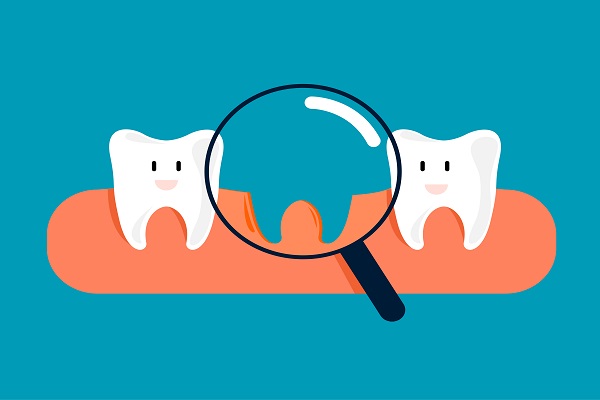What To Do About a Missing Tooth

Patients can have a missing tooth for a number of reasons. Accidents, infection or decay can cause a tooth to become non-vital and may require it to be extracted. The way the tooth was lost does not matter as much as the need to replace it. Missing teeth can cause patients to feel self-conscious or change elements of the jawbone, so timely replacement holds many benefits.
Replacement options
Dentistry has advanced greatly in recent years, and there are more replacement options for a missing tooth than ever before. Bridges, dental implants and removable partial dentures are all solutions to consider when replacing teeth.
Bridge
A dental bridge replaces a missing tooth by crowning the adjacent teeth and attaching an artificial tooth that spans, or bridges, the gap created by the lost tooth. The bridge unit is one piece that is permanently cemented into place and does not have to be removed daily like a partial denture. The crowns on the bridge are matched to the shade of your natural teeth and custom made to fit your smile.
Implant
Dental implants have gained popularity in recent years as a restorative option for missing teeth. An implant can be a great option to replace a single missing tooth if there is adequate bone support. Dental implants are typically made of titanium, although new materials are being researched as well. The implant procedure may require multiple visits for completion. Once the implant is fully integrated into the bone, a crown that matches the other teeth in size, shade and shape can be placed on the metal implant.
Partial denture
When patients hear the word "denture," they typically think of an entire set of teeth that is removable. However, a partial denture can be made to replace just one tooth or even several teeth. The removable partial denture has clasps that attach to adjacent teeth and hold the partial in place.
The partial can have a metal base and metal clasps with natural-looking gums and teeth fabricated on it, and this option usually lasts the longest. More aesthetically pleasing non-metal partials can be made as well, though. These are useful when the clasps will be visible when the patient smiles, as the clasps can be made out of an acrylic material that matches the patient's gums and has a more discreet appearance.
Benefits of tooth replacement
If patients have been missing a tooth for a lengthy period of time, they may wonder what the benefits are of replacing it. Replacing teeth can transform a patient's entire smile and provide a boost of self-confidence. Replacement of missing teeth can help prevent the cheek from looking sunken in where a tooth is gone. These dental solutions can also keep adjacent teeth from drifting towards each other; when this happens it limits the type and possibility of restorations.
Conclusion
Options for tooth replacement are numerous, and dentists can help determine which option would benefit a patient's smile. An entire smile can be restored by replacing the patient's missing teeth.
Request an appointment here: https://www.yourdowntownmckinneydentist.com or call Sam Patel DDS, PA at (972) 638-5848 for an appointment in our McKinney office.
Check out what others are saying about our dental services on Yelp: Missing Tooth in McKinney, TX.
Related Posts
When a toothache persists or becomes severe, an emergency dentist can provide immediate relief. Whether it is due to an infection, a cavity, or an injury, prompt dental care also helps to prevent further complications. Understanding what to expect when seeing a dentist about a toothache can help ease concerns.Tooth pain can result from minor…
Brushing and flossing your teeth daily are oral hygiene basics, but what about using mouthwash? Is it an essential part of keeping your teeth healthy.Except for fluoride rinses, mouthwashes are generally not part of the daily oral care routine recommended by dentists, but that does not mean it has no value. Using mouthwash correctly can…
Seeking an emergency dentist immediately after a dental injury can help prevent further complications and ensure proper treatment. Whether a tooth is chipped, cracked, or knocked out, taking the right precautions is essential for preserving oral health. However, some actions can worsen the damage or delay healing. To protect the teeth and avoid additional harm,…
A damaged tooth can be uncomfortable and make eating difficult, but quick treatment can restore function and appearance. An emergency dentist is a general dentist who offers fast, effective care to address urgent dental concerns. Their goal is to protect the tooth and prevent further complications. Whether caused by an accident, infection, or another unexpected…
